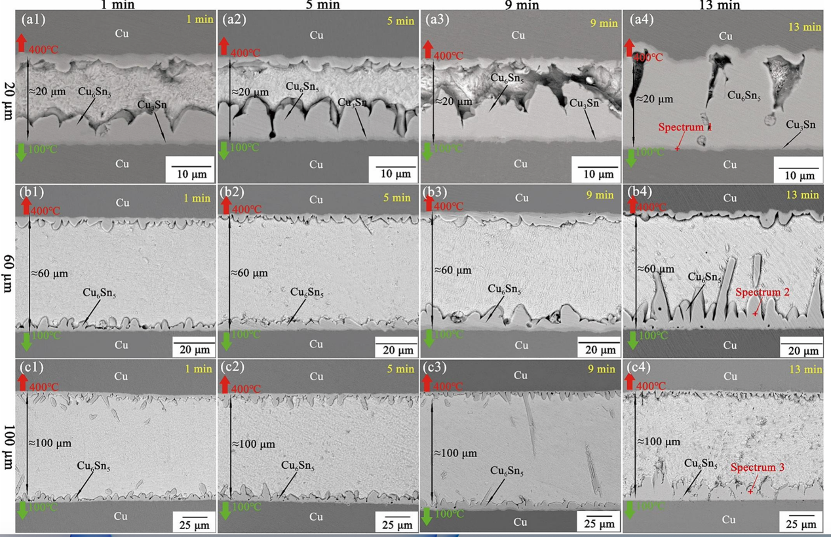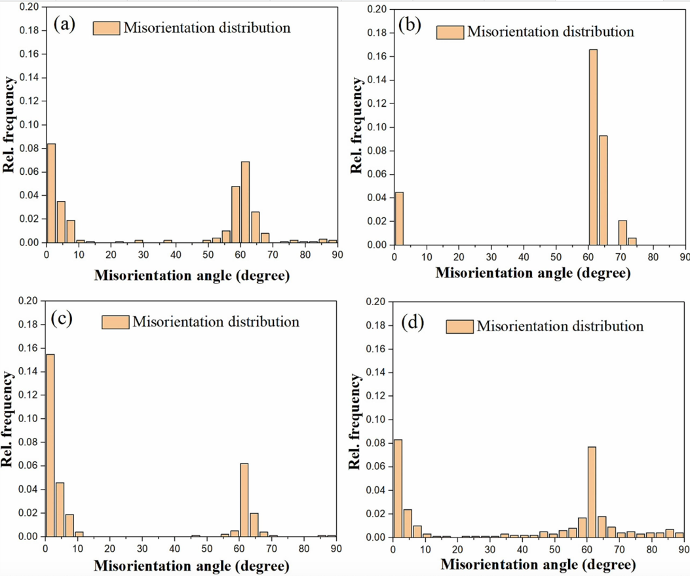Thermal Gradient Bonding of Solder Paste_Shenzhen Fitech

Thermal Gradient Bonding of Solder Paste_Shenzhen Fitech
Currently, packaging in the microelectronics industry is developing towards high density and small size, which is obviously intended to expand Moore's law. Therefore, the solder paste used in packaging should have small particle sizes. The type and properties of grains within small solder joints become crucial for studying the properties of solder joints. Thermal gradient bonding is a soldering method that is currently widely discussed. Many people believe that the application of thermal gradient can control the directional growth of intermetallic compounds (IMCs) through solid-liquid interdiffusion bonding, thereby obtaining specific performance of small solder joints. On the contrary, solid-liquid interdiffusion bonding takes a long time to form complete IMCs under isothermal conditions, and the orientation of IMCs is difficult to accurately control.
1. Thermal gradient bonding experiment
In order to gain a deeper understanding of the impact of thermal gradient soldering. Zhang et al. used SAC305 to bond the copper solder pads at the upper and lower ends. Both copper pads have a size of 10×10×2mm. Thermal gradient bonding was achieved using a heating platform, with a hot end temperature of 400 ℃ and a cold end temperature of 100 ℃.

Figure 1. Thermal gradient bonding experiment.
2. Thermal gradient bonding results
During the heating process, the formation of Cu6Sn5 can be clearly observed. The thinner IMC layer between Cu6Sn5 and Cu pads is Cu3Sn. As shown in the figure, it can be observed that thermal gradient bonding changes the growth rate of IMCs. The IMCs at the hot end did not show significant growth, while the IMCs at the cold end grew rapidly. As the bonding time increases, the number of cold-end IMCs significantly increases, while the change in hot-end IMCs is not significant. In addition, the increase of the solder layer thicknesses allows Cu6Sn5 to exhibit a slender columnar morphology in thermal gradient bonding solder joints. Differently, the IMCs under isothermal bonding grew symmetrically at both ends of the solder joint.

Figure 2. IMC growth of thermal gradient bonding. Solder layer thickness: (a) 20μm; (b) 60μm; (c) 100μm.
When the thickness of the solder layer is 20μm, the growth of thermal gradient bonding cold-end IMCs is the fastest. As the thickness increases, the influence of bonding time on the growth rate of cold-end IMCs gradually weakens. Therefore, thermal gradient bonding can be used to manufacture full IMC solder joints by controlling the thickness of the solder layer and bonding time.
The following figure shows the misorientation distribution of Sn grain boundaries in Cu/SAC305/Cu solder joints. The misorientation distribution of isothermal bonding and thermal gradient bonding is roughly between 0°-15° and 55°-65°. However, isothermal bonding can make the misorientation distribution of Sn grain boundaries more dispersed, while thermal gradient bonding can make the distribution of Sn in a single solder joint more concentrated.

Figure 3. Misorientation distribution of Sn grain boundaries. Solder layer thickness: (a) 20μm (thermal gradient); (b) 60μm (thermal gradient); (c) 100μm (thermal gradient); (d) 100μm (isothermal).
3. Fitech's solder paste
Shenzhen Fitech has been deeply involved in the solder industry for many years and has rich experience in the development of solder paste solders such as SAC305 and SnBi57.6Ag0.4. Fitech’s solder products have excellent soldering strength and customized viscosity, making them suitable for various processes such as printing and dispensing. Welcome customers to learn more product information with us.
4. Reference
Zhang, Z.Z., Hu, X.W., Chen, W.J., Tan, S.F., Chen, B., Wang, J., Jiang, J., Huang, Y.F., Zhu, G.Y., He, Y.S., Jiang, X.X. & Li, Q.L. (2023). Study of microstructure, growth orientations and shear performance of Cu/Sn-3.0Ag-0.5Cu/Cu solder joints by using thermal gradient bonding. Materials Characterization, vol.203.

















 Back to list
Back to list



